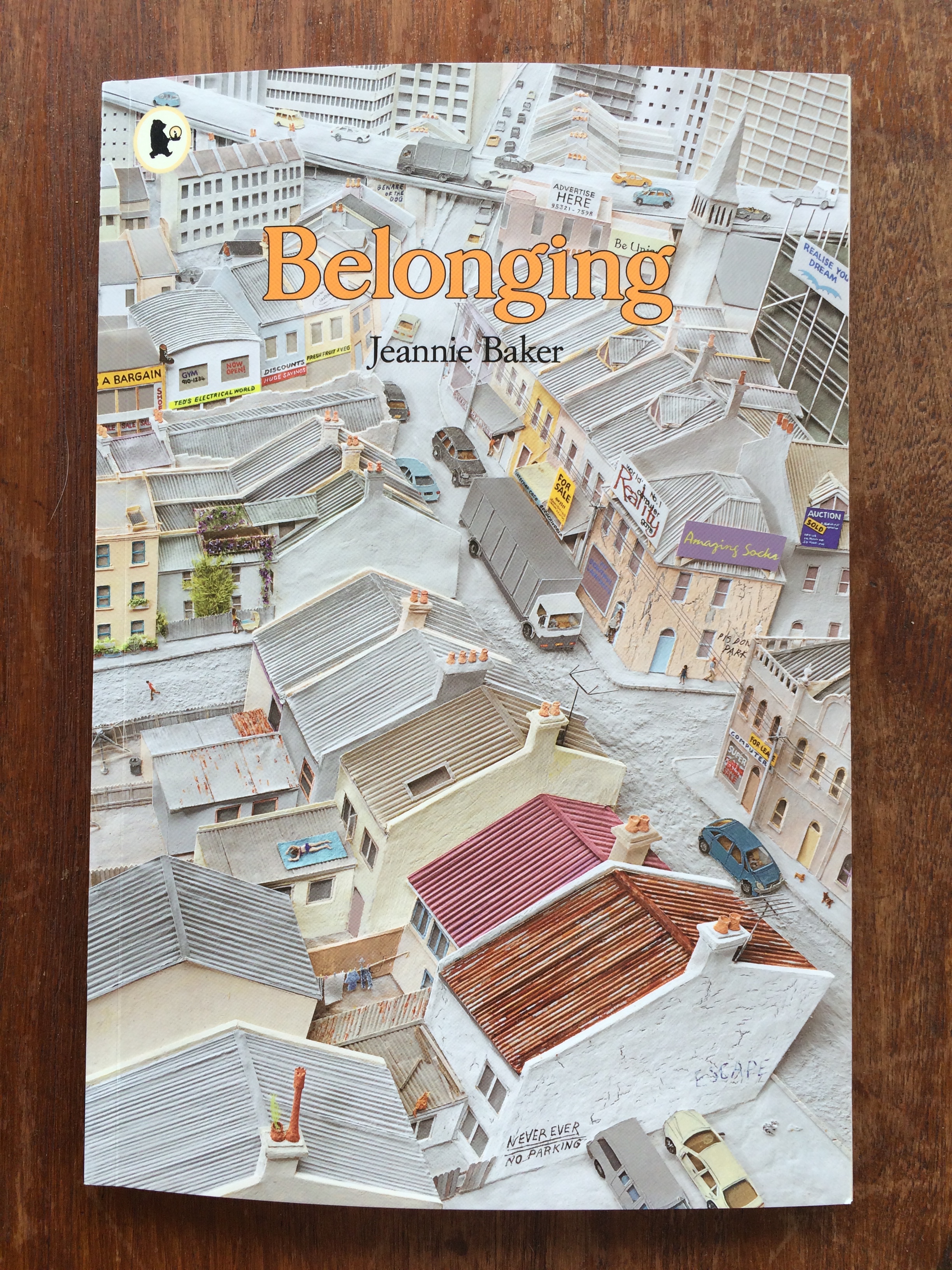Belonging by Jeannie Baker (Walker Books Ltd. 2004)
Two friends gave me this aptly-titled book for my birthday last year. I have other Jeannie Baker books, or rather I’ve bought them for my children because of the beauty of the artwork and they way the art elicits conversation. They give me a flush of emotion, a tear that says, yes, you’ve captured the exquisite beauty of life.
English-Australian artist Jeannie Baker refers to her books as ”wordless’’. She makes them by photographing her detailed miniature collage scenes which are made out of everything from bark to earth, wool or tin.
There are no words in Belonging and yet, it is anything but wordless. The power and depth behind the textured three-dimensional collages supersede language; the pictures fire directly to our emotions so we can relish the book over and over again at any age. The longer we linger over the pages the more we come to understand that the meaning behind each photographed collage are just as layered as the artwork itself.
Belonging is the story of a family growing up in an urban environment. It follows the life of Tracy, from birth to marriage, all by looking out the same wooden casement windows onto the family garden and neighbourhood. As she grows, and the articles on her window sill change to indicate her age, we also witness how the community comes together to turn what was once graffiti-covered concrete and soulless billboards into renovated buildings nestled behind thriving green spaces.
The book celebrates the power of the individual to make choices, embrace neighbourhood and work together to reinvigorate and re-green urban areas.
It’s no coincidence that the casement windows, through which we see the story, move between being closed and opened until near the end of the book when they stay open, hinting at moving towards an open mind. At the end when Tracy gets married in the community garden and has her own child, the area has become a leafy haven and the casement windows have become large doors swinging open onto a wooden balcony. Vines have even started to creep inside the house, suggesting the interdependence of people and place.
Baker of course is sending a message about how we treat our cities and our land. It’s also a treatise on the power of community engagement and the need to bring back, respect and protect our green spaces.
In a magazine interview about Belonging, Baker said:
”…the word ‘belonging’ implies an emotional connection. If one wants to really belong to something one has to work at it and contribute to it.’’
I have no doubt that Baker, who immigrated to Australia from England in 1975, has worked to find her own belonging in Australia.
Baker also echoes the way Australia’s First People relate to the land in her Author’s Note at the end of Belonging:
‘’…we belong to the land. If we keep it healthy, it will sustain the web of life on which we depend….
‘‘People are discovering the need to nurture and be nurtured by the unique character of the place where they live.
‘’It takes time as this books shows. But by understanding the land on which we live and by caring for it we can choose between just having a place to live or belonging to a living home.’’
The book is a beautiful portrayal of a traditional life where a family lives in the same house through a generation or two. It appeals in that it provides a snapshot of our lives and the milestones of our children. Belonging, however, is a unique and personal experience. No matter how much I appreciate the story she has told and the intricacy of the artwork, I cannot relate to living in the same house: my family moved many times before I went to university and then I moved about every two years through four different countries until recently.
But maybe that’s why I get sentimental when I ‘read’ Belonging with my children. It’s portraying something I’ve never experienced.
None of that takes away from the fact that Baker is reminding all of us, regardless of whether we’re migrants or have been living in the same place for generations, to stop taking our world for granted, look outside our window, and learn about the land that sustains us so we can connect with it.
Belonging is so much more than a children’s book.

